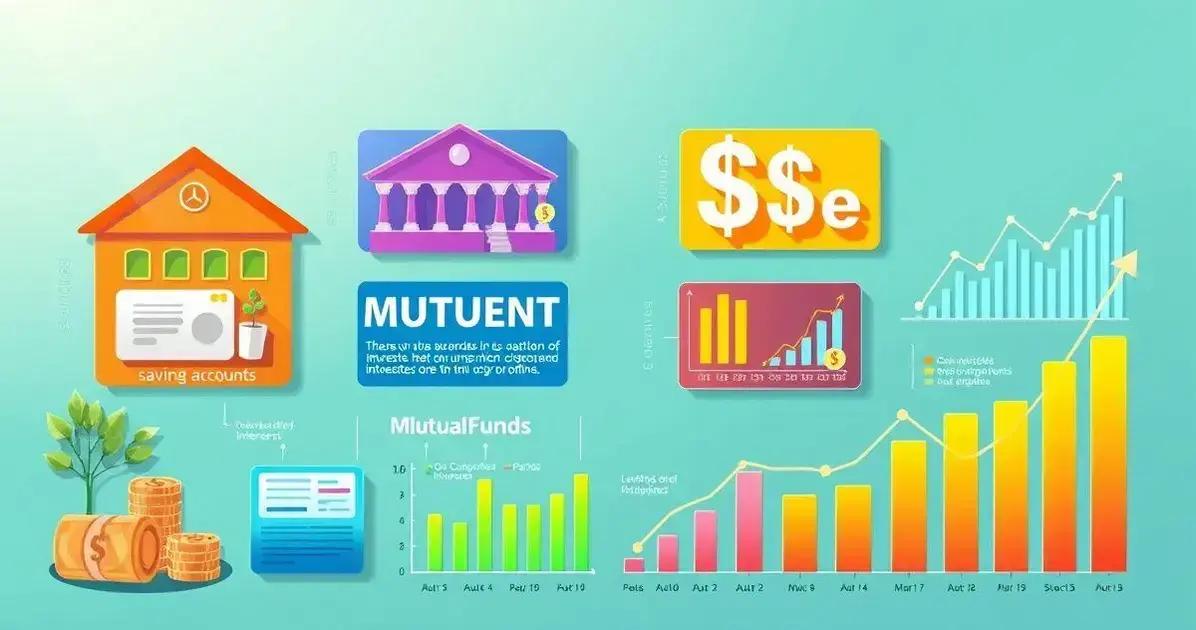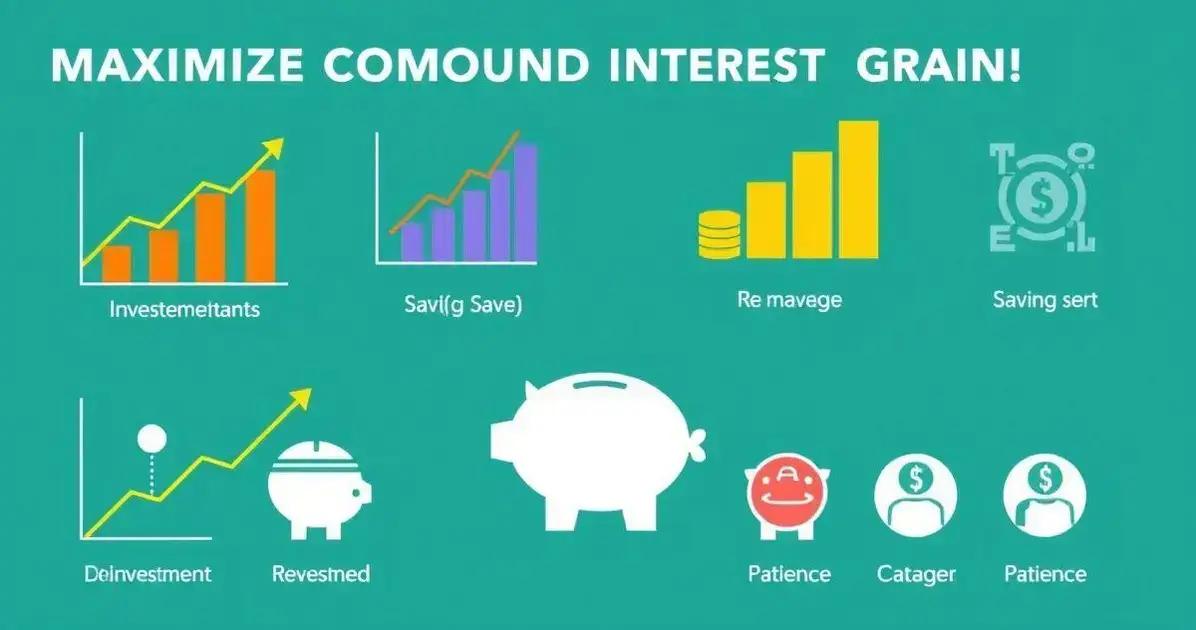Compound Interest: Unlocking the Secrets to Financial Growth and Wealth
Advertising
Compound interest is a powerful financial concept that allows your investments to grow significantly over time by earning interest on both your principal and previously accrued interest. To maximize your gains, start early, reinvest earnings, and choose high-interest accounts.
Have you ever wondered how the magic of compound interest can transform your savings into wealth? In finance, compound interest is the process where your earnings generate their own earnings, leading to exponential growth. This article will explore how compound interest works, its benefits, and strategies to maximize your returns.
Understanding Compound Interest: The Basics
Compound interest is a vital concept in finance that helps money grow over time. It works by not only earning interest on the initial amount you invest but also on the interest that accumulates. This means that every year, you earn interest on a larger amount.
How Compound Interest Works
When you invest money, you typically receive interest based on your principal, which is the original amount you put in. With compound interest, the interest you earn adds to your principal. In turn, this larger amount earns even more interest. For example, if you invest $1,000 at a 5% annual interest rate, after one year, you will have $1,050. The next year, you earn interest on $1,050, not just $1,000!
The Formula for Compound Interest
To calculate compound interest, you can use the formula: A = P(1 + r/n)^{nt}, where:
- A = the total amount after interest
- P = the principal amount
- r = annual interest rate (decimal)
- n = number of times interest is compounded per year
- t = number of years the money is invested or borrowed
By understanding and using this formula, you can calculate how much money you will have in the future, helping you make better financial decisions.
The Importance of Time
Time plays a crucial role in the effectiveness of compound interest. The longer you leave your money invested, the more it can grow. This is due to what is often called the “time value of money.” This means that a dollar today is worth more than a dollar in the future because of its potential earning capacity.
Even a small amount of money can grow significantly through the power of compound interest if given enough time. For instance, investing $100 monthly for 30 years at a 7% annual interest rate could yield over $120,000!
How Compound Interest Works in Investments

In investments, understanding how compound interest functions is critical for maximizing your gains. It is the reason why investing early is so beneficial. The basic idea is that your earnings grow faster because they are reinvested. Unlike simple interest, which only pays on the principal, compound interest pays on both the principal and the accumulated interest. This leads to significant growth over time.
The Power of Compounding
Investing your money allows you to take advantage of compounding. For example, if you invest $1,000 at a 5% interest rate, you will earn $50 in the first year. However, in the second year, you earn interest on $1,050, not just $1,000. This cycle continues, often resulting in exponential growth.
Frequency of Compounding
The frequency of compounding can greatly affect your returns. Interest can be compounded annually, semi-annually, quarterly, monthly, or even daily. The more frequently the interest is compounded, the more you will earn. For example, if you invest $1,000 at an annual interest rate of 5%, compounded monthly, after one year, you will have approximately $1,061.68 instead of $1,050 when compounded annually.
Investment Vehicles That Use Compound Interest
Many investment options utilize compound interest. Savings accounts, certificates of deposit (CDs), and retirement accounts like 401(k)s and IRAs are common examples. Each of these accounts may offer different compounding periods and interest rates, which can significantly impact your total earnings. It’s important to understand the terms offered before choosing where to invest your money.
Real-Life Example of Compound Interest
Let’s say you decide to invest in a mutual fund. If you invest $100 per month for 30 years at an average annual return of 7%, you could end up with over $100,000, thanks to the magic of compound interest. This shows how starting early and being consistent can set you up for long-term financial success.
The Benefits of Compound Interest Over Time
The benefits of compound interest grow significantly over time, making it one of the most powerful tools for wealth accumulation. Rather than simply earning interest on the money you initially invest, compound interest enables your earnings to generate additional earnings. This process creates a ripple effect that can lead to massive growth in your funds.
Exponential Growth
One of the most exciting aspects of compound interest is that it leads to exponential growth rather than linear growth. For instance, if you keep your money invested for a longer period, you can see your account balance climb rapidly, especially as interest is added. This is often described as a snowball effect, where the interest earned becomes part of the investment, generating even more return.
Starting Early Pays Off
Time is a crucial factor when considering compound interest. The earlier you start saving or investing, the more you benefit from this principle. Even small contributions can grow significantly over the years. For example, if a person starts investing $100 a month at age 20 with an average return of 7%, they could have over $200,000 by retirement age, compared to just $70,000 if they started at age 30.
Wealth Generation
Long-term investments that utilize compound interest can lead to substantial wealth generation. This is especially true for retirement accounts, such as 401(k)s or IRAs, where your money works for you over many years. As your interest income compounds, it can help ensure a comfortable retirement without relying solely on other income sources.
Financial Freedom
With compound interest on your side, you have the potential to achieve financial freedom. This means having enough savings and investments to live comfortably without worrying about money. The power of compounding can allow you to reach your financial goals quicker, enabling you to focus on things that matter most in your life.
Strategies to Maximize Your Compound Interest Gains

Maximizing your compound interest gains is essential for growing your wealth. There are several effective strategies you can employ to ensure that your investments reach their full potential. Here are some key strategies to consider:
Start Early and Invest Regularly
The earlier you begin investing, the more time your money has to grow. Even small amounts can accumulate significantly due to compounding. Aim to contribute regularly, such as setting up automatic deposits into your investment or savings accounts. This habit not only builds your investment but also takes advantage of compound interest.
Choose the Right Accounts
Selecting the right investment accounts can greatly affect your compound interest returns. Look for accounts with higher interest rates and frequent compounding periods. Retirement accounts like 401(k)s and IRAs can be particularly beneficial, as they often have tax advantages that further enhance your growth.
Reinvest Your Earnings
Instead of taking the interest or dividends you earn out of your investment, consider reinvesting them. By reinvesting, you increase the amount of money that generates compounding returns, allowing your initial investment to grow faster.
Be Patient and Stay Invested
Investing is a long-term endeavor. Resist the urge to withdraw your funds during market downturns. Staying invested allows you to benefit from the market’s recovery, maximizing your compound interest gains over time.
Understand the Effects of Fees
Be aware of fees associated with your investment accounts, as high fees can eat into your returns. Look for low-cost investment options, such as index funds or ETFs, which tend to have lower expense ratios. Minimizing fees can lead to healthier returns on your investments.
Maximize Your Wealth with Compound Interest
Understanding and applying the concept of compound interest can fundamentally change your financial future. By starting early, choosing the right investment accounts, and reinvesting your earnings, you can unlock the full potential of your wealth.
Being patient and remaining invested, along with minimizing fees, will ensure that you make the most of your compound interest gains. When harnessed effectively, compound interest becomes not just a financial principle, but a powerful means of achieving your long-term goals.
By incorporating these strategies into your financial plan, you can build a solid foundation for ongoing wealth and financial independence.
FAQ – Frequently Asked Questions About Compound Interest
What is compound interest?
Compound interest is the interest on a loan or deposit calculated based on both the initial principal and the accumulated interest from previous periods.
How does compound interest benefit savings?
Compound interest allows your money to grow faster than simple interest because you earn interest on both your initial investment and the interest that has already accrued.
What are some strategies to maximize compound interest gains?
To maximize gains, start investing early, reinvest your earnings, choose accounts with high interest rates, and minimize fees.
Why is it important to start investing early?
Starting early takes full advantage of compounding, allowing more time for your investment to grow and accumulate wealth.
How can I calculate compound interest?
You can use the formula A = P(1 + r/n)^(nt), where A is the total amount after interest, P is the principal amount, r is the annual interest rate, n is the number of times interest is compounded per year, and t is the number of years.
What investment accounts utilize compound interest?
Common investment accounts that use compound interest include savings accounts, certificates of deposit (CDs), and retirement accounts like 401(k)s and IRAs.




